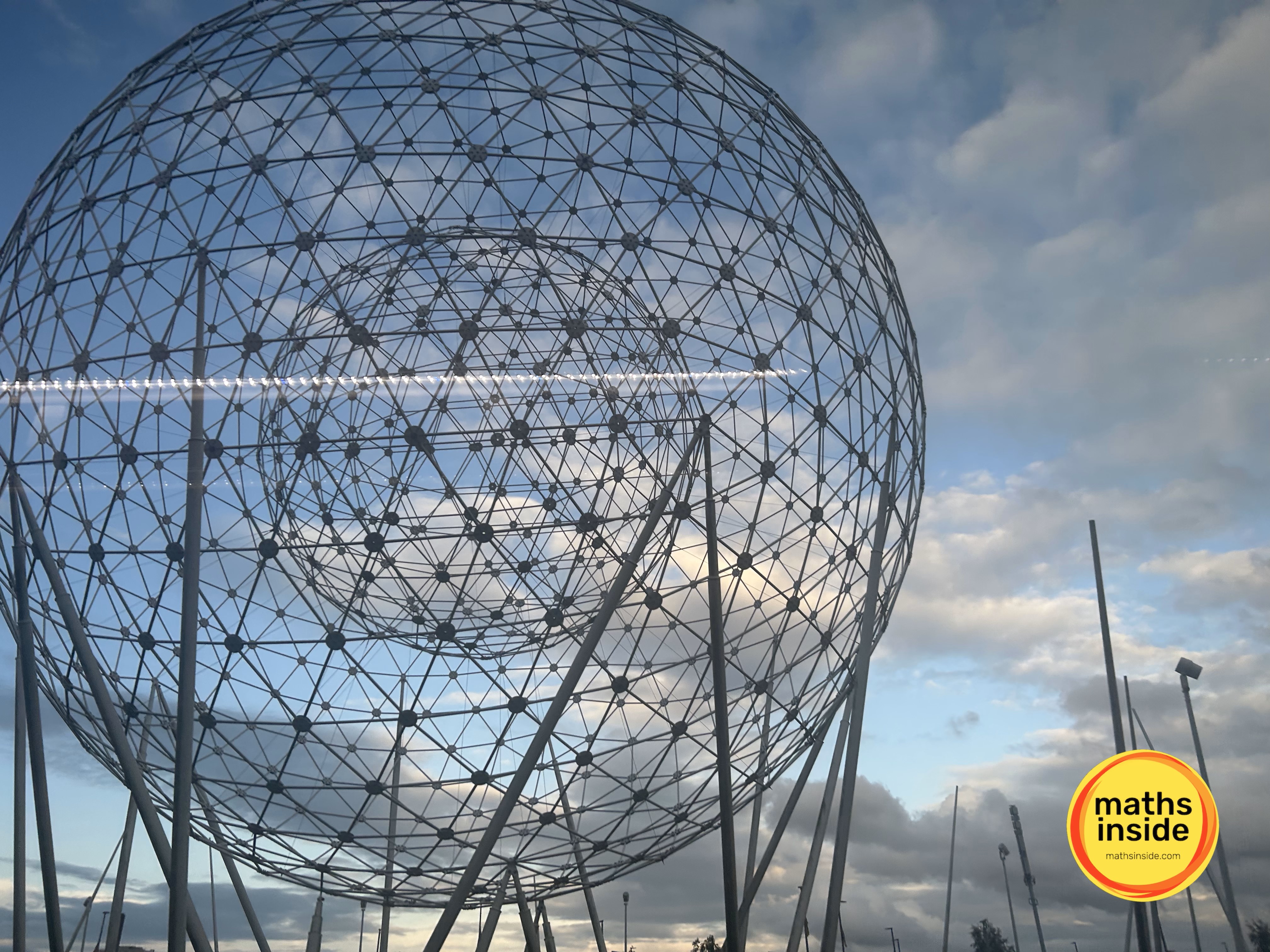Spherical Triangles (the 'why' of shapes)

I took this picture in Belfast, Ireland. I discovered afterward that this is the ‘Rise’ sculpture, created in 2011. It was designed by Wolfgang Buttress and commissioned by the Belfast City Council as part of a large-scale road improvement program.
The sculpture consists of a geodesic sphere suspended inside a larger, similarly geodesic sphere with a diameter of 30m. By geodesic, simply meaning that the sphere is made of a combination of triangles, hexagons, and pentagons - or in this case, just triangles. Interestingly, the triangles used in this sculpture are not and cannot possibly be equilateral. Six equilateral triangles put together would lie flat and cannot be bent to become a sphere.
Geodesic spheres are used in architecture as geodesic domes, as they are very efficient and structurally stable. Domes are known for being strong structures, and triangles as well for their fixed angle and ability to evenly distribute pressure. So making a dome out of tessellating triangles creates the most pressure-efficient structure known to man. Of course a geodesic dome can be created using pentagons or hexagons, but it just so happens that those shapes can be divided to become triangles as well. Up to half the triangles in the lowest row of a geodesic dome can be removed without harm to the dome’s structural integrity. Also because of its sphere shape its surface area to volume ratio is very low, so it can have lots of volume with minimal surface area; making it very prospective for future architecture.
— Elza Lee (S4)